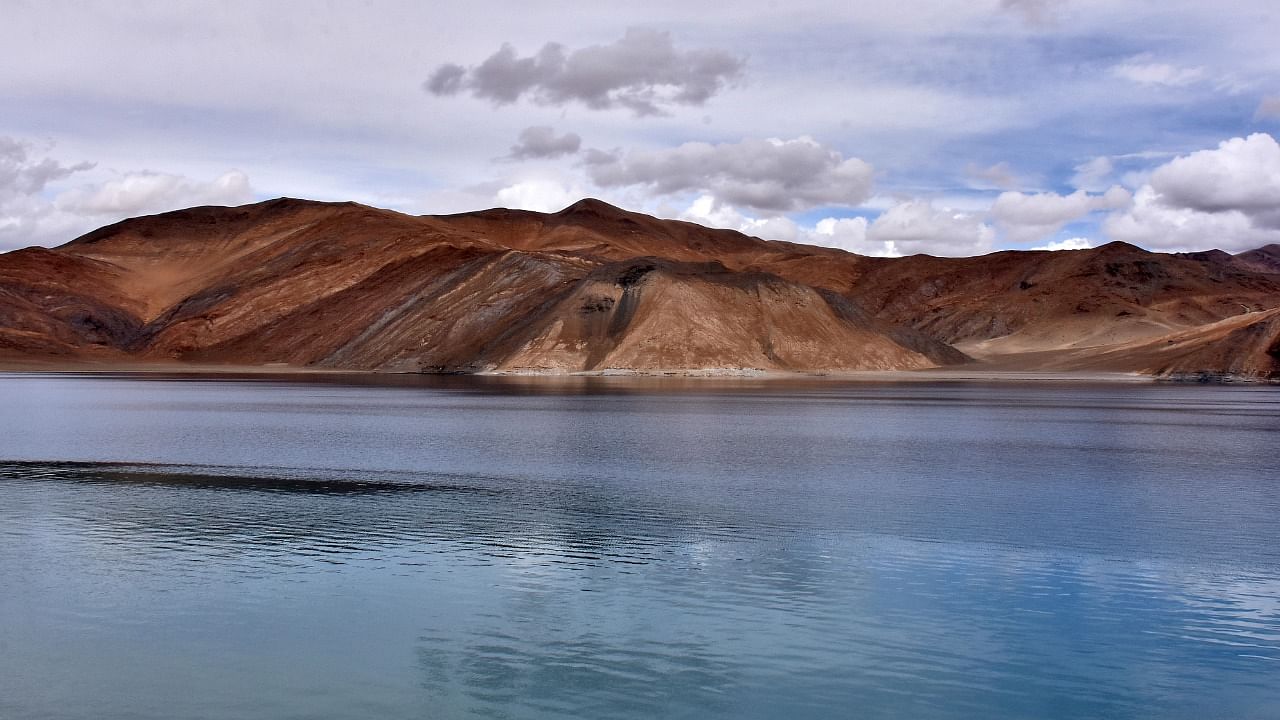
The Chinese People’s Liberation Army appears to be constructing a second bridge on their side at the Pangong Tso in eastern Ladakh for better movement of troops and armoured vehicles, satellite images reveal.
The new bridge could improve the connectivity between the lake and the depth areas on the Chinese side by creating a shorter and more direct route to the Finger 8 area on the northern side of the lake, which is currently the boundary of the buffer zone.
Construction of the new bridge is in continuation of PLA’s ongoing infrastructure development work in eastern Ladakh in which a smaller bridge was built a month ago and a road network is being laid to facilitate quick troop mobilisation around the boomerang-shaped lake that witnessed several rounds of confrontation between Indian and Chinese troops in 2020.
The new bridge, sources said, would likely be completed by July and substantially reduce the distance (currently 180 km) between Khurnak Fort and Rutog, the main staging area for PLA troops.
The first bridge, constructed between January and April, is being used as a service link to ferry people and material for the bigger bridge, which on completion may be able to carry armoured vehicles.
Such infrastructure constructions from the PLA side, according to army officials, are indications of Chinese unwillingness to move away from flash points near the Line of Actual Control (LAC), necessitating permanent deployment of Indian troops just like the Line of Control – the disputed western border with Pakistan in Kashmir.
Last week, Army Chief Gen Manoj Pande along with Lt Gen Upendra Dwivedi, Northern Army Commander and Lt Gen A Sengupta, General Officer Commanding of the Leh-based 14 Corps visited the forward areas in Ladakh. They were appraised of the ground situations.
Also Read | India, China fail to resolve remaining issues in eastern Ladakh at 15th round of military talks
"High level of operational readiness is being maintained by the forces while maintaining a high tempo of capability development,” the Army said in a statement.
Gen Pande said China intended to keep the boundary question alive while the Indian Army aimed to re-establish the “trust and tranquillity” between the two sides. “But it cannot be a one-way affair.”
India aims to restore the status quo ante prior to April 2020 just before the beginning of the face-off.
The two sides held 15 rounds of talks involving senior military and diplomatic officials to iron out the thorny issues. But the progress has been limited so far.
The stand-off between the Indian and Chinese militaries erupted on May 5, 2020, following a violent clash in the Pangong lake areas.
Both sides gradually enhanced their deployment by rushing in tens of thousands of soldiers as well as heavy weaponry. Each side currently has around 50,000 to 60,000 troops near the LAC.
